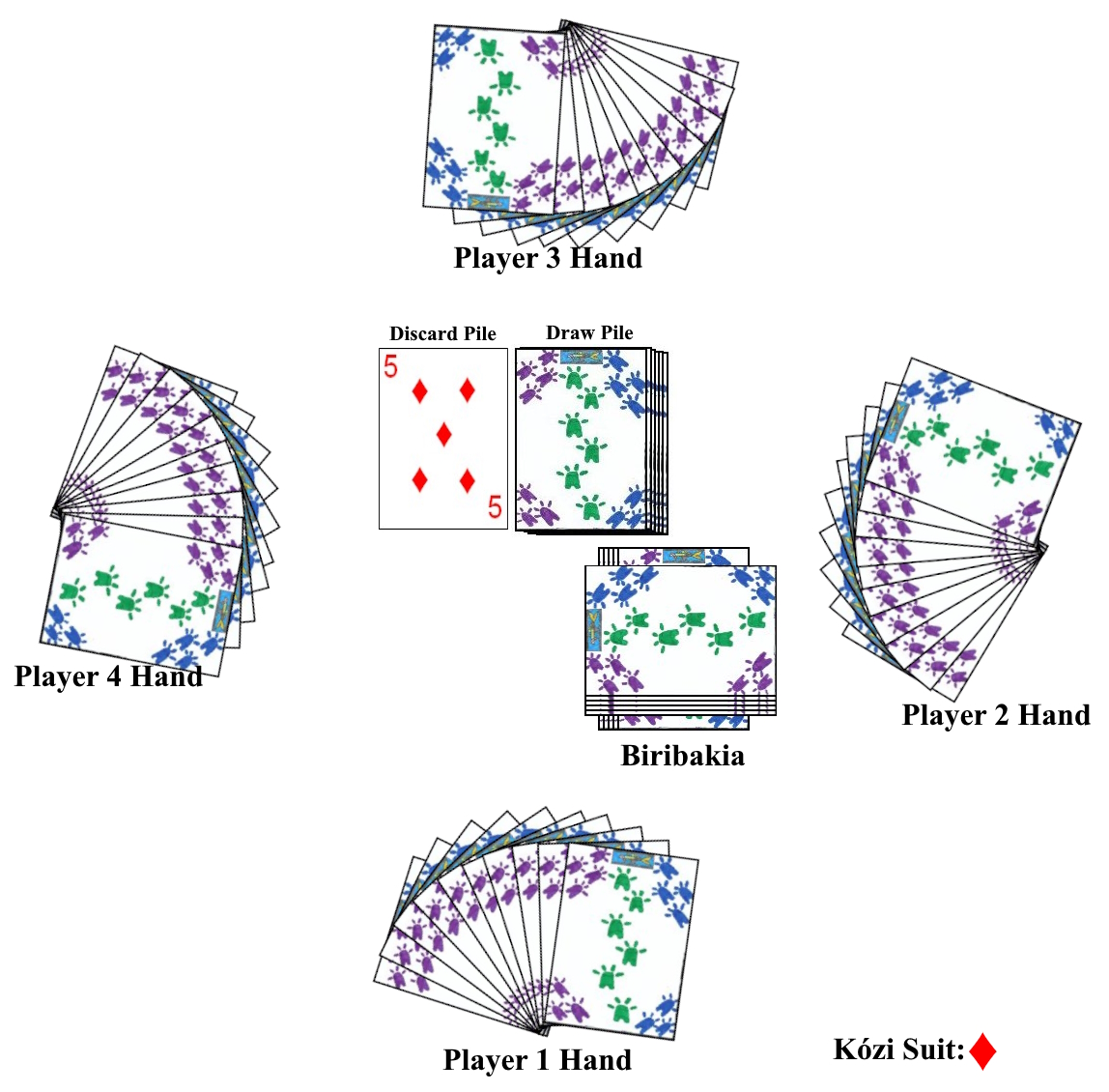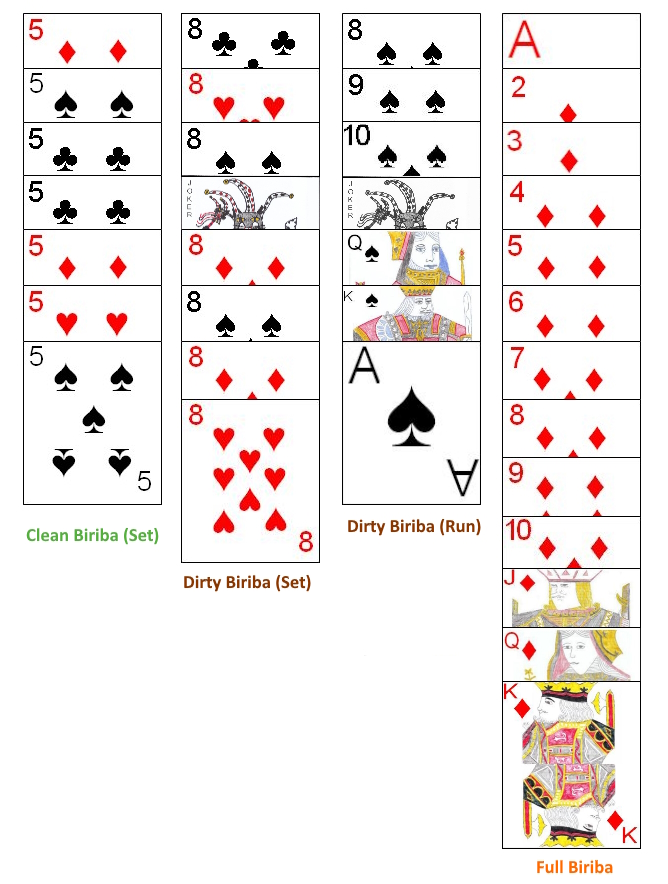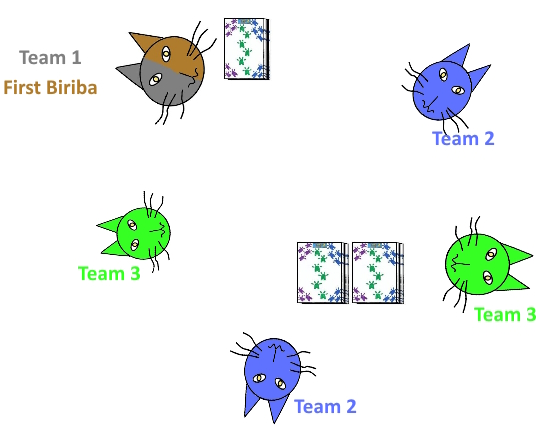How to Play Biriba |
 Once the players are ready the dealer then thoroughly shuffles the deck and offers it to the player at his left for the cut. After the cut, the dealer then begins dealing the cards in a counter-clockwise rotation around the table, starting with the player at his immediate right. The cards are dealt face-down and one-at-a-time. He continues dealing the cards until each player has a hand of 11 total cards. After this deal, the cutter then takes a portion of the face-down deck and deals out two 11 card piles. He places one on top of the other, at a right angle, and sets these to the side, as the "biribakia". The deck is then set in the middle of the table in a face-down pile, to create the draw pile and the top card from this draw pile is set face-up beside the draw pile to start the discard pile. The suit of this first, exposed card should be noted as this suit is set as the "kózi" suit, which will earn bonus points for certain melds in that suit.
Once the players are ready the dealer then thoroughly shuffles the deck and offers it to the player at his left for the cut. After the cut, the dealer then begins dealing the cards in a counter-clockwise rotation around the table, starting with the player at his immediate right. The cards are dealt face-down and one-at-a-time. He continues dealing the cards until each player has a hand of 11 total cards. After this deal, the cutter then takes a portion of the face-down deck and deals out two 11 card piles. He places one on top of the other, at a right angle, and sets these to the side, as the "biribakia". The deck is then set in the middle of the table in a face-down pile, to create the draw pile and the top card from this draw pile is set face-up beside the draw pile to start the discard pile. The suit of this first, exposed card should be noted as this suit is set as the "kózi" suit, which will earn bonus points for certain melds in that suit.
| Card Denomination | Point Value |
|---|---|
| Joker | 20 Each |
| Ace | 15 Each |
| 2 | 10 Each |
| 8, 9, 10, Jack, Queen, King | 10 Each |
| 3, 4, 5, 6, 7 | 5 Each |
 In addition to points added and subtracted from that teams, score, there are a number of other point scoring opportunities or bonuses that can be
accrued at the end of the hand:
In addition to points added and subtracted from that teams, score, there are a number of other point scoring opportunities or bonuses that can be
accrued at the end of the hand:
| Team's Score | Initial Meld Card Point Requirement |
|---|---|
| 1495 or Less | 0 |
| 1500 to 2995 | 75 |
| 3000 to 3995 | 100 |
| 4000 or Above | 120 |
 Five Player Biriba: A five player variant of Biriba has also been developed and is
occasionally played in the same areas as the normal variant. This game is played in a manner similar to the four player variant, however it also has several distinct differences:
Five Player Biriba: A five player variant of Biriba has also been developed and is
occasionally played in the same areas as the normal variant. This game is played in a manner similar to the four player variant, however it also has several distinct differences: